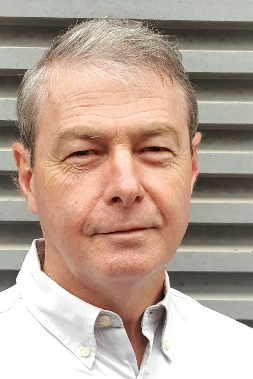IEEE SA CAES Seminar - An overview of weather radars: past, present, and future
Dear IEEE members and guests
The next IEEE Control, Aerospace and Electronic Systems (CAES) seminar will be on Monday, February 8th, 2021 at 7:30 pm (Adelaide time).
The speaker is Dr Alan Seed, Associate Professor at School of Engineering and the Built Environment Griffith University, he will be presenting a seminar on:
An overview of weather radars: past, present, and future
Please aim to join the WebEx meeting beforehand, so we can start on time.
https://ieeemeetings.webex.com/ieeemeetings/onstage/g.php?MTID=e81653c4ec0d5f880ac1fac9db4be081a
Event number (access code): 130 102 7616
Also, please check out the new IEEE SA Section website: https://r10.ieee.org/saus/
Regards
Waddah Al-Ashwal
IEEE SA CAES Chapter Chair
An overview of weather radars; past, present, and future
Weather radars have been used to observe the atmosphere for over 60 years and are now considered to be essential observation systems for a National Hydro-meteorological Service. This talk will begin with a brief overview of the physical principles of how to interpret the signals that are returned to weather radar and how to relate radar echoes that are observed aloft to rainfall intensity on the ground.
There have been two major revolutions in weather radar technology since 1970; the introduction of Doppler in the 1990s and dual-polarization since 2010. In addition to the advances in radar technology, there have been transformational developments in computer technology and communication. The talk will discuss the impact of these transformations on the value of the service that is provided by weather radar. In particular, the impact of improved radar technology and data processing on the quality of the data which enables and the transition from qualitative to quantitative weather radar products.
Of course, radar technology continues to be developed. The U.S. is actively developing phased array radars that are expected to be operational in the next decade or so. These radars will enable comprehensive volumetric scans of the atmosphere at sub-minute temporal resolutions, which will enable greater flexibility in how the radar is operated (e.g., allowing both aircraft tracking and weather observations from the same radar). Unfortunately, there is no free lunch in radar technology. The talk will cover some of the obstacles that need to be overcome and the compromises that need to be made before these new radars can reach their full potential.
Date and Time
Location
Hosts
Registration
Speakers
 Dr Alan Seed of School of Engineering and the Built Environment Griffith University
Dr Alan Seed of School of Engineering and the Built Environment Griffith University
Biography:
Dr Alan Seed was educated in South Africa with a BSc Civil Engineering (1979) and MSc Agricultural Engineering (1986) at the University of Kwazulu Natal. He worked for the Department of Water Affairs designing of farm-scale irrigation dams before moving to the Hydrological Research Institute to work on satellite remote sensing and hydrological modelling. After completing a PhD on radar rainfall estimation at McGill University, Montreal, Canada in 1989 he returned to South Africa to work in the flood forecasting section of Water Affairs. He left South Africa in 1993 to work as a Research Fellow in the Physics Department of Auckland University to develop software for a mobile X-Band radar for high-resolution radar rainfall observations in the Southern Alps. He then moved to the Bureau of Meteorology in 1997 where he worked on radar rainfall estimation and forecasting until he retired at the end of 2020. His research interests include stochastic modelling of rainfall in space and time, radar rainfall estimation, and using radar data for very short-term rainfall forecasts. During his tenure at the Bureau, he led the development of Rainfields, the Bureau’s operational radar rainfall estimation system, and STEPS, the Bureau’s operational radar based rainfall nowcasting system. He is currently an Adjunct Associate Professor in the School of Engineering and Built Environment, Griffith University, and works on a range of hydro-meteorological projects.


 Add Event to Calendar
Add Event to Calendar